Before Meta’s new midtown Manhattan office welcomes employees this fall, it is unveiling a new art collection. Five monumental, site-specific commissions by a diverse roster of New York-based artists—many of which represent the largest work of their careers—have been installed in the landmarked James A. Farley Building, which currently houses a branch of the United States Postal Service, as well as Moynihan Train Hall. The tech company signed the lease during lockdown and at 700,000 square feet spread across five floors, Meta is the 1914 building’s largest tenant—and the office is similar in scale to its Frank Gehry-designed campus in Menlo Park, California. Its dedicated art program, Meta Open Arts, is helping to bolster its creative community.
“While we’re all building this technology, we want to keep people grounded in the physical world,” says Tina Vaz, head of Meta Open Arts since 2019 and the former deputy director of global communications at the Guggenheim Foundation. “We want employees to see the hand of the artist and connect with their process. Technology is about connecting us and building community.”
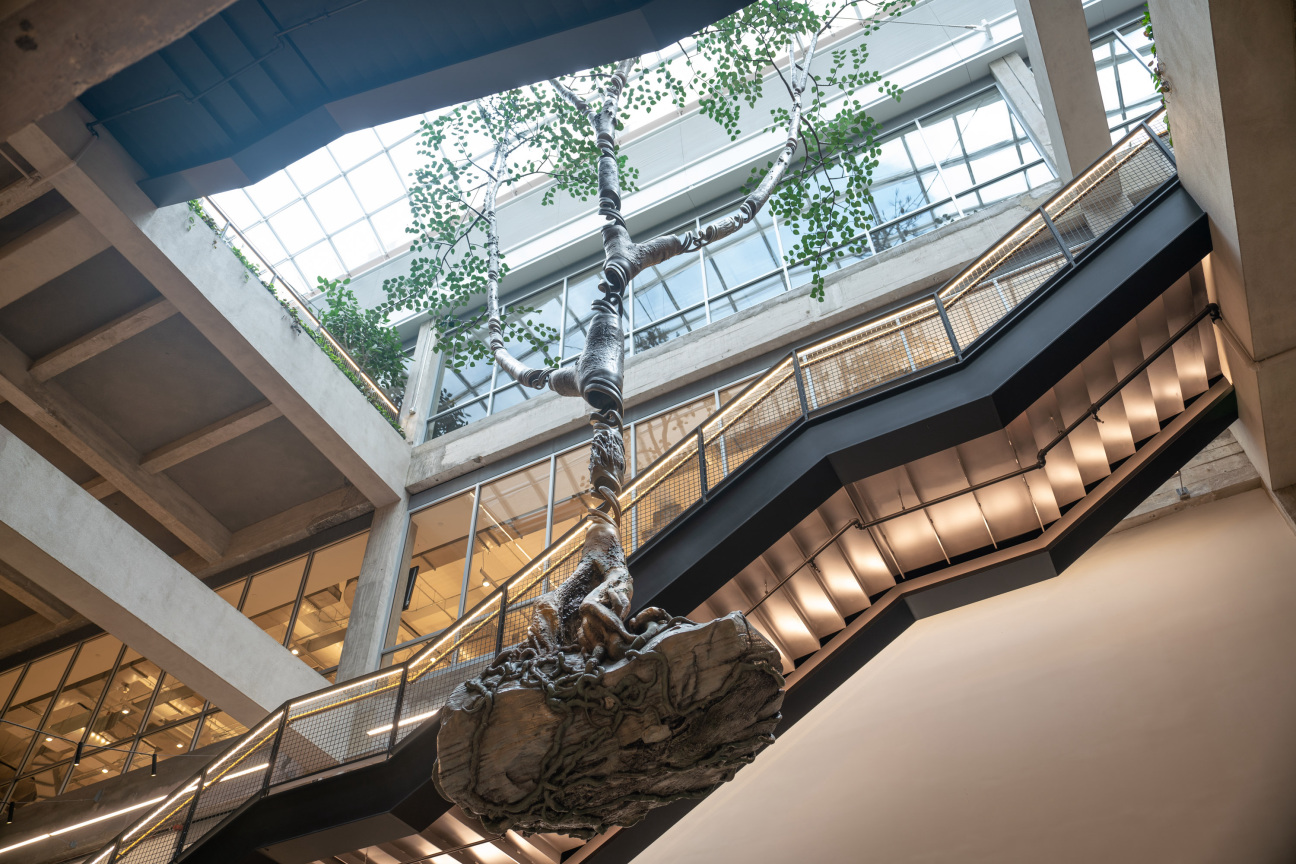
Founded in 2010, Meta Open Arts collaborates directly with local artists on site-specific art rather than working with a gallery to collect pieces. Partnering with cultural organizations and artists (Vaz estimates there have been about 1,200) around the world, it has played a vital role in curating artworks for nearly 200 of Meta’s global offices. “The sweet spot for us is to give artists an opportunity to expand their practice,” says Vaz, who has tapped talents including Shantell Martin and Nina Chanel Abney for projects ranging from office installations and art talks to augmented reality backgrounds for Messenger and other apps where their work can be seen by millions of users.
For this new office in New York, artists including Baseera Khan and Liz Collins were chosen for the diversity of their work and life experiences, says Vaz, and took inspiration from their city’s history and natural landscape. The building’s centerpiece commission is Timur Si-Qin’s Sacred Footprint, a 50-foot-tall stainless steel and aluminum tree sculpture, suspended from the skylight of the workplace’s central atrium. Of German and Mongolian Chinese descent and having grown up in Berlin, Beijing, and in a Native American community in the American Southwest, Si-Qin is at the vanguard of technologies foundational to the metaverse, including virtual and augmented reality, and took 3D scans of trees in upstate New York to create his tree of life-inspired sculpture.
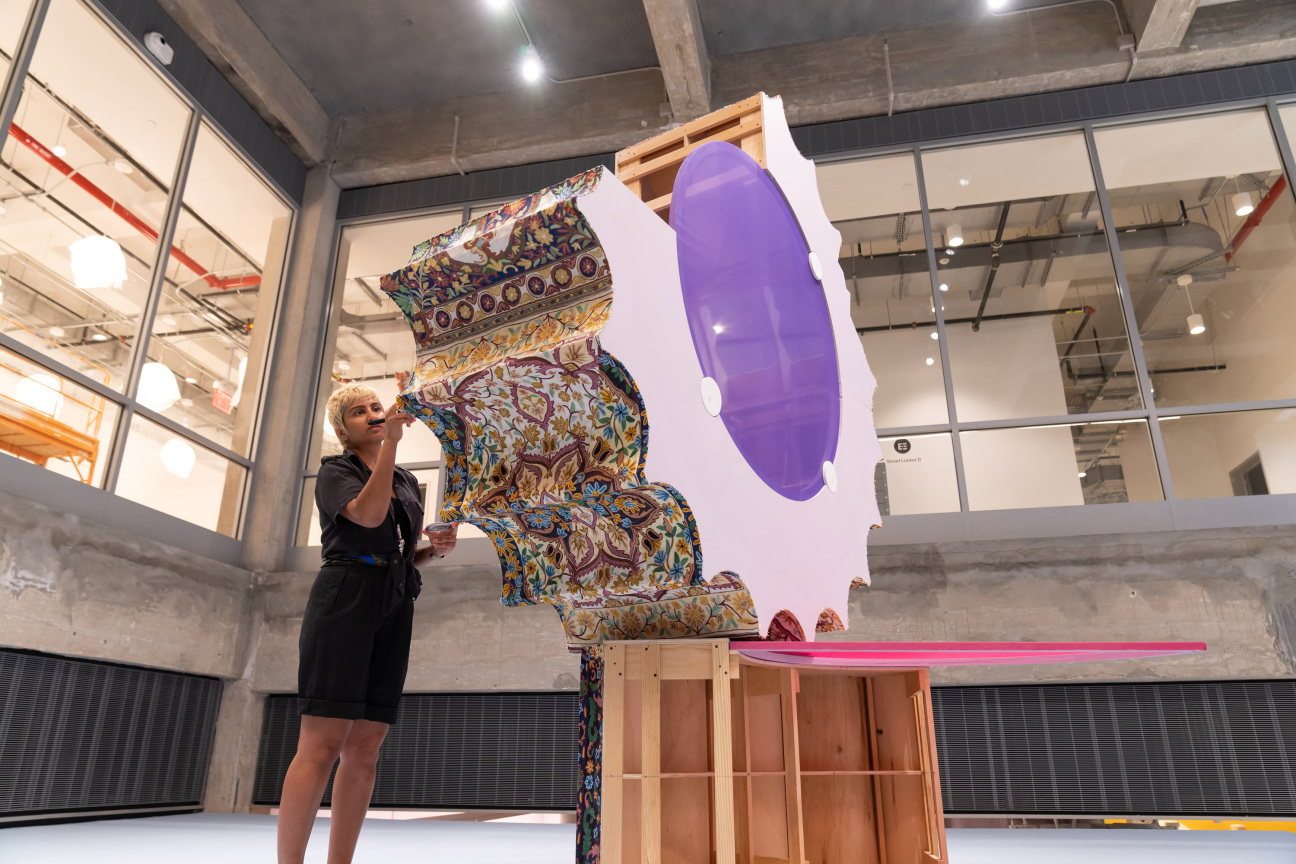
Facing Si-Qin’s work is a two-part installation by Brooklyn-based Khan, who was born in Texas to Muslim immigrant parents from India and recently closed a solo show at the Brooklyn Museum. For Meta, Khan constructed a 10-foot-tall hollowed column, which references the Corinthian column ubiquitous on Western institutional facades but is wrapped in handmade Kashmiri silk rugs whose patterns have been enlarged and hand-painted on a 50-foot mural nearby, exploring systems of power, colonialism and heritage.
Artist-couple Esteban Cabeza de Baca and Heidi Howard also hand-painted several murals, representing the four corners of the United States, for the main office lobby, as well as two nearly 20-foot triptychs, representing the natural terrain of New York. Based in Long Island City, Cabeza de Baca (raised in California by Native American and Mexican parents) and Howard (a child of New York City artists) create works that celebrate human relationships with plants, animals, and the land.
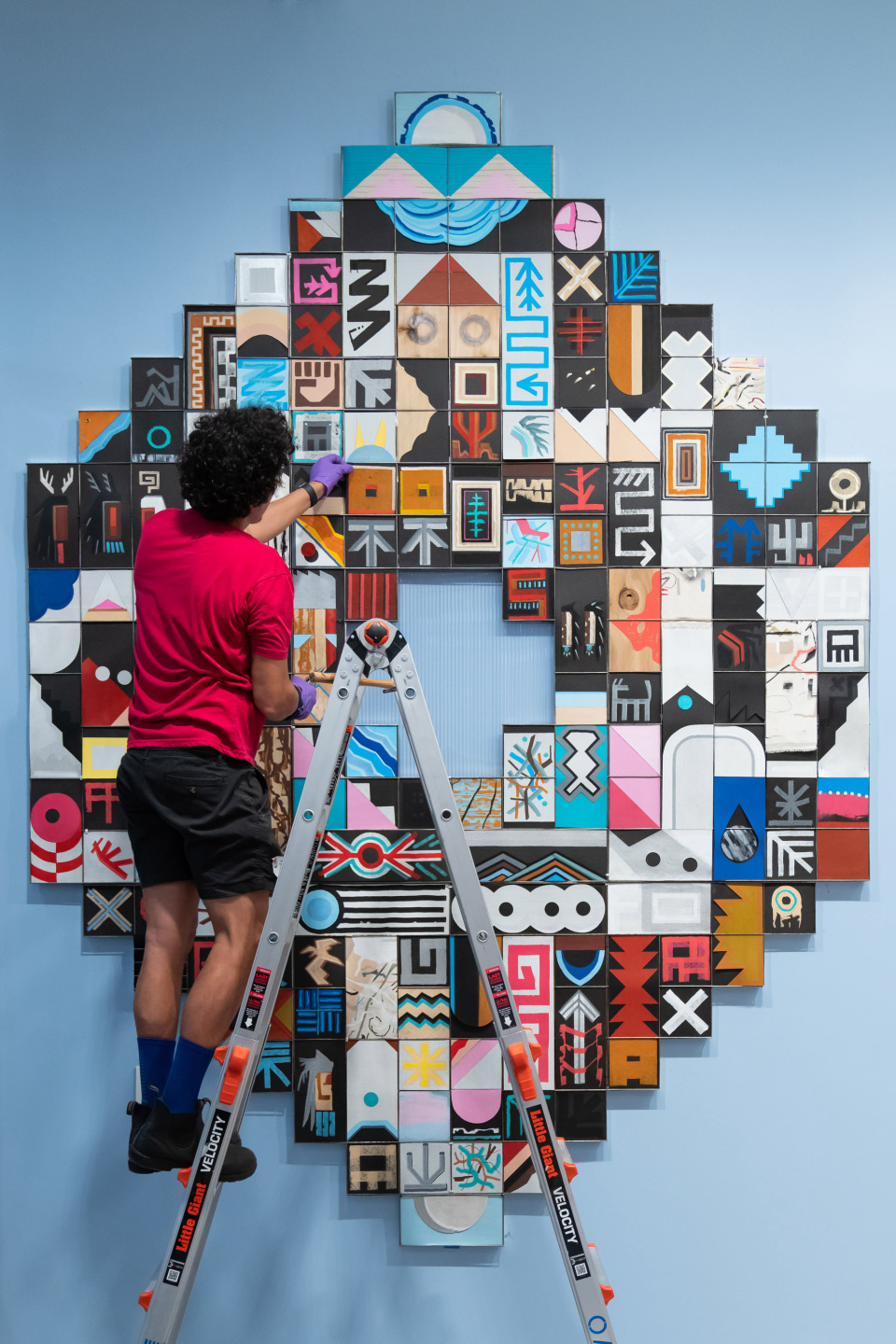

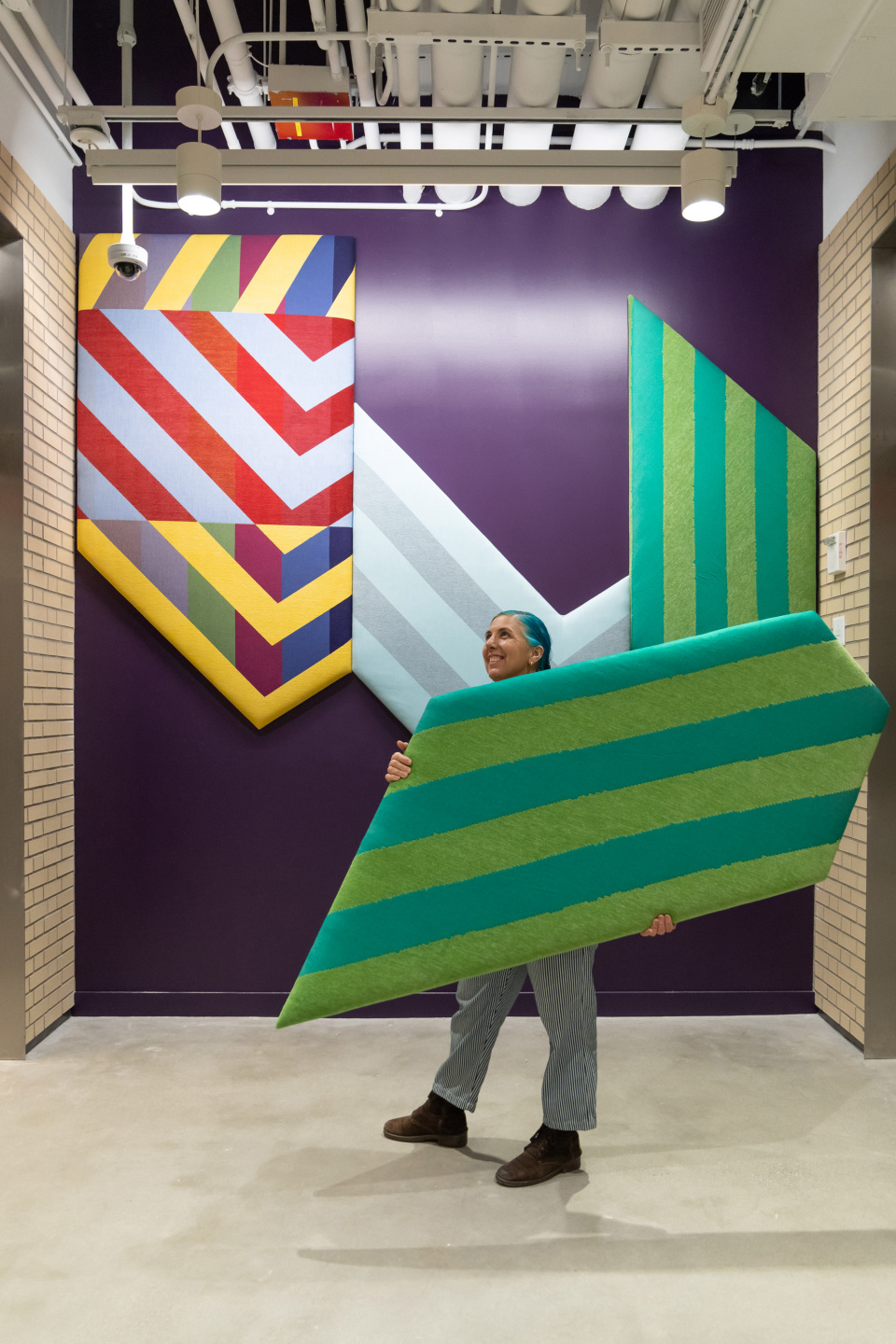
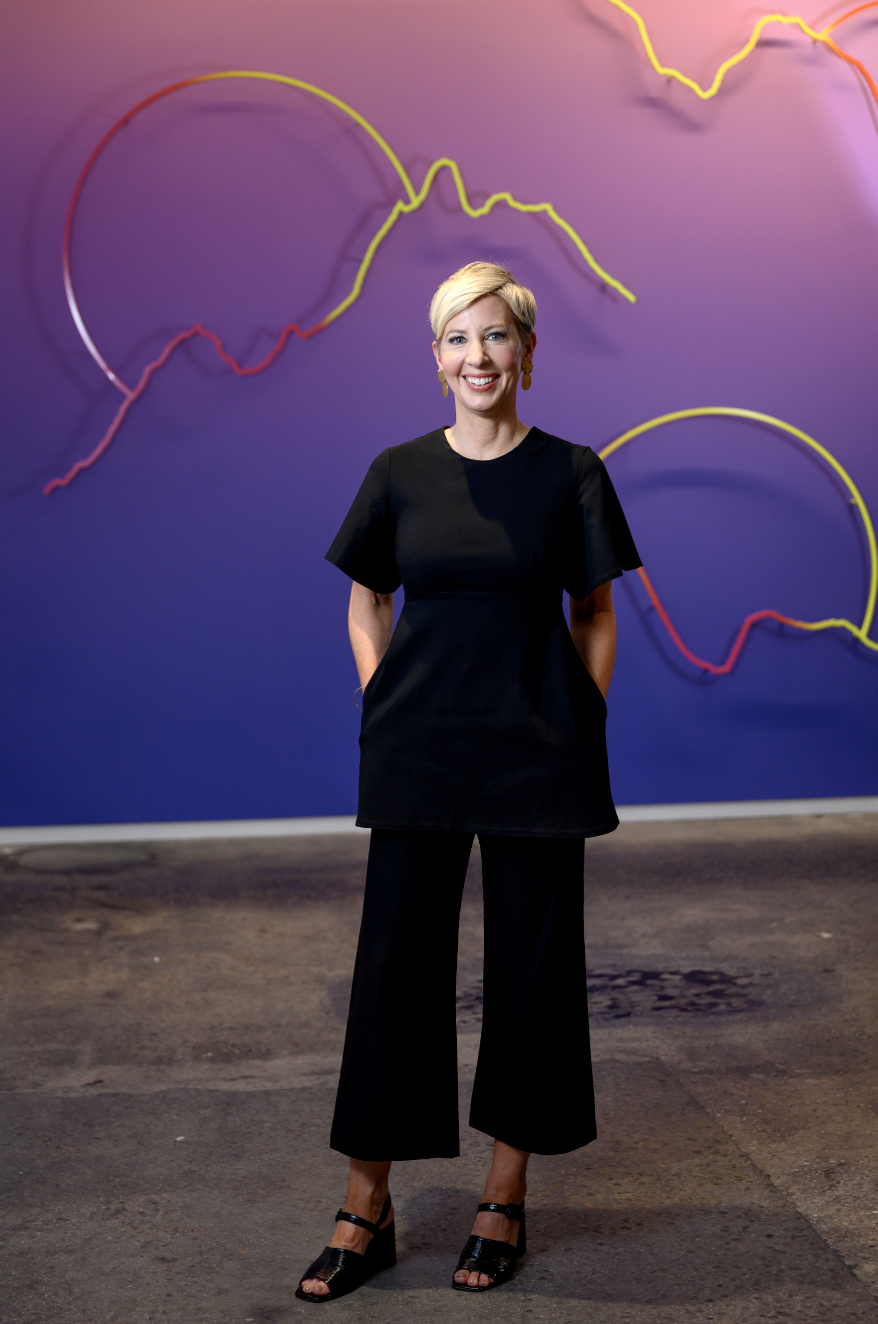

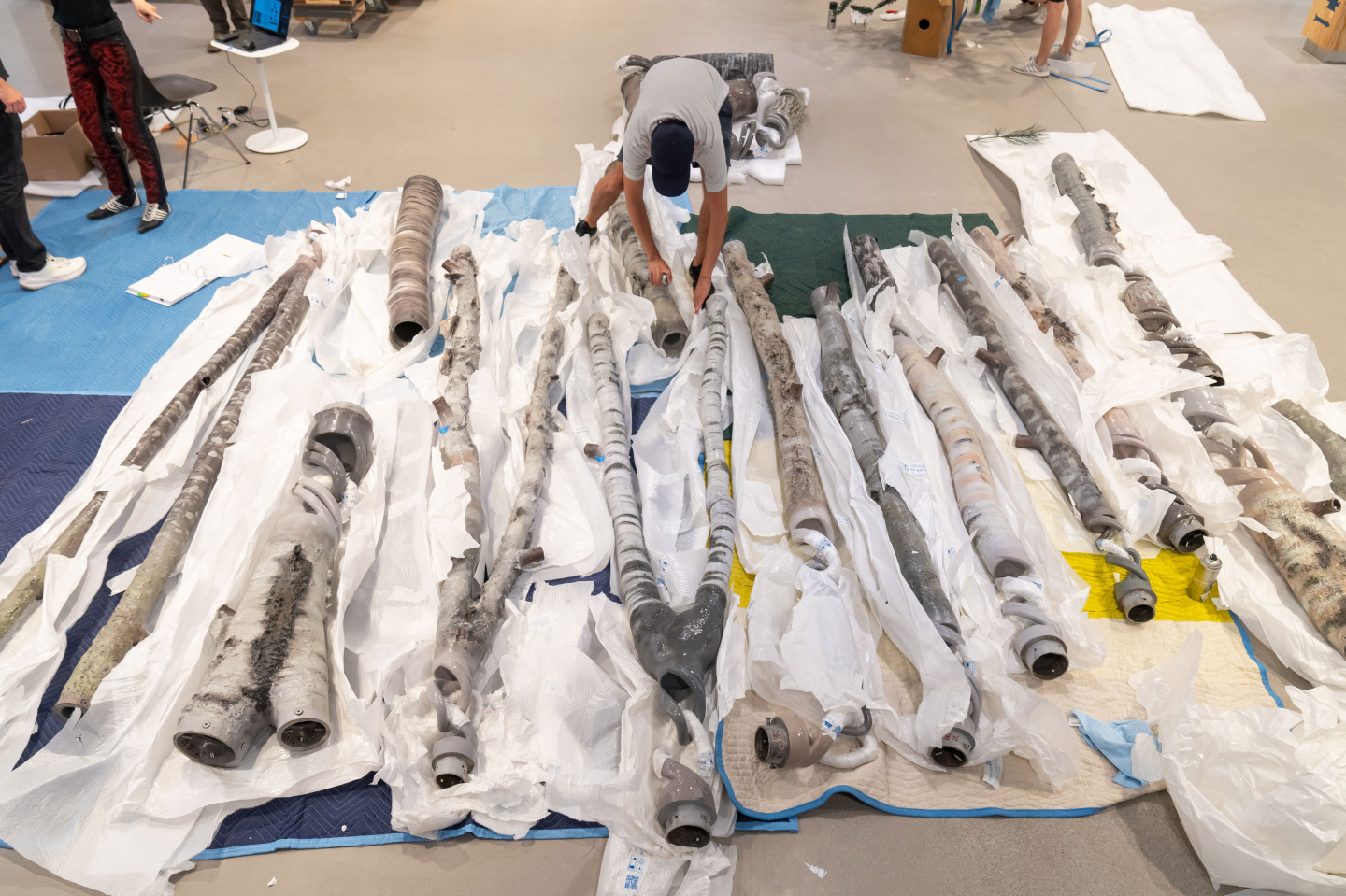
In the south lobby, Matthew Kirk’s “weaving” paintings A Shadow of a Shadow and A Distant Lie merge his identities as a member of the Navajo Nation and a dad in urban Ridgewood, Brooklyn. Using contemporary construction materials, such as tar paper, Kirk composes the same grid structure as Navajo rugs, weaving together hundreds of small square paintings, with subjects ranging from superheroes to Navajo language. Meanwhile in the Farley Building’s Ring lobby, which is visible from Moynihan Train Hall, Brooklyn-based multimedia artist Collins contributed Every Which Way, a work composed of 29 upholstered padded panels in her signature vibrant textiles that span over 100 feet and depict geometric patterns found in New York street signage. The textiles were made with a Jacquard loom, a weaving technology that is often considered a precursor to computing.
The work resonates particularly with the Meta Open Arts mantra for every commission. “The heart of our program is about the idea that creating art and tech are analogous forms of creative problem solving,” says Vaz. “There’s iteration, experimentation, imagination, failure, and building things that have never been built before.”










 in your life?
in your life?

